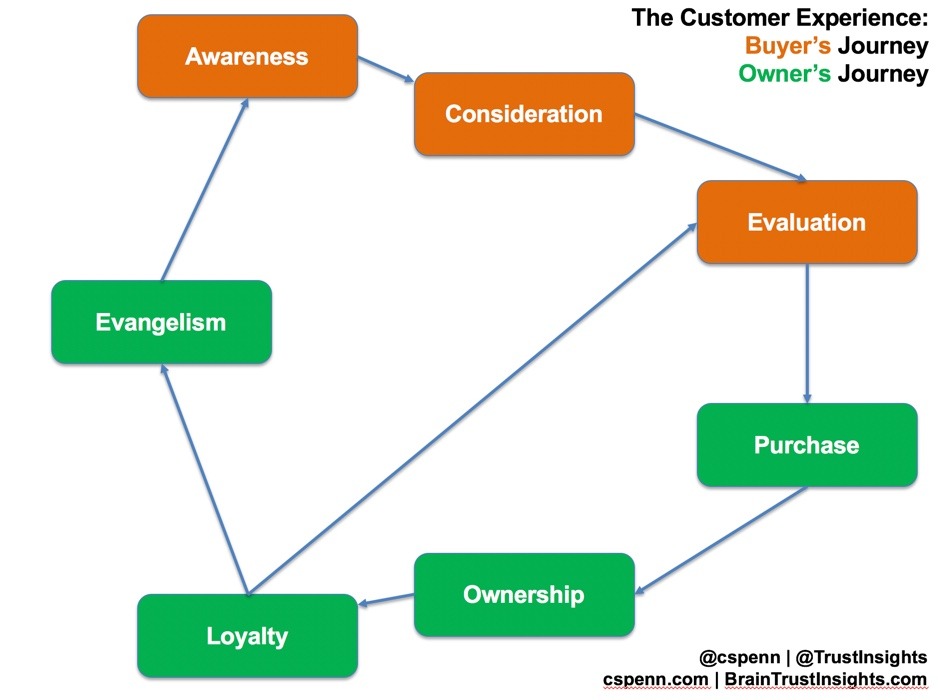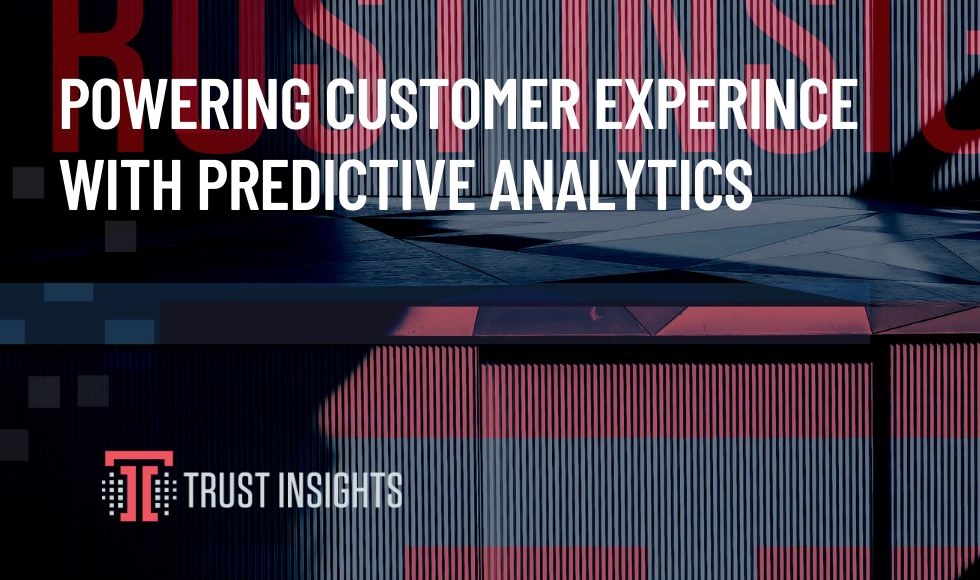The customer experience arguably the most important part of your business. Without customers, you aren’t able to meet any of your business goals. Without a solid customer experience, you will have a hard time attracting and keeping new business.
How do we even start to tackle the customer experience and understand what our audience wants? One piece at a time. During this series, we’ll explore each step of the customer journey and how you can use predictive analytics to create more effective marketing plans for your customer experience.
First, let’s get on the same page about what a predictive model is what steps are included in the customer experience.
Predictive Analytics
Predictive analytics helps you find patterns in the data using historical information and projecting it forward. This is accomplished using statistics and machine learning. You use the forecast as a guide to figure out where to go next and not be blindsided by something you weren’t paying attention to. It’s like driving a car. In order to drive safely, you have to look forward. Knowing what is behind you is helpful but not as important as seeing what lies in front of you so that you don’t crash.
Prediction falls into two general buckets: scoring and forecasting
- Scoring builds a model to understand, as best as possible, why something happened
- The most common model is multiple linear regression, which is literally ancient
- The most well-known type is credit scoring
- The goal is to answer the question, “What caused this?” and secondarily, “Is this likely to happen?”
- Forecasting attempts to predict when something will happen
- The most common model is ARIMA, a 1976 algorithm
- The most well-known type is financial forecasting
- The goal is to answer the question, “When will this happen?”
Virtually every major predictive algorithm is available for free in open-source software like R and Python.
To learn more about predictive models, watch Co-Founder Chris Penn’s explainer video here: https://www.christopherspenn.com/2018/05/you-ask-i-answer-what-predictive-models-do-you-work-with/
Customer Experience
A customer experience map is a visual representation of the steps someone takes to find out about you and your product to purchase your goods. It is sometimes called the path to purchase, buyers journey, owners journey, sales funnel, and a whole host of other things. A true customer experience map covers both the buyer’s and owner’s journey in order to get a full 360 picture.
The goal of understanding the customer experience is to figure out how to reach your audience, have them purchase your product or services, and keep them coming back for more. Ideally, someone would just see your product, buy it, love it, and tell everyone about it. Sometimes it’s that easy but most of the time people need more information and time to make a decision and stay engaged. You can keep your mapping to four simple steps: Awareness, Feet in the door, Opportunities, Customers. This is a great place to start and might be enough for you to map your marketing activities to converting someone through each stage. Google has a really good breakdown of building your own customer journey map. Check it out here. However, to really understand your customer you’ll want to look at a more detailed customer experience map, like this example:

This version of a journey covers the buyers and owners journey, comprising a very detailed customer experience. The purpose of outlining your customer’s journey is to figure out what methods work best to reach your desired audience at each stage and to help alleviate their pain points. You have digital channels such as email marketing, social, search, and paid as well as different tools as techniques at your disposal. Well, so does every other marketer. You’re charged with figuring out how to rise above the noise that exists online and make sure that you’re reaching the right people at the right time.
Thinking about planning each step of the customer experience can feel overwhelming. That’s where using a predictive forecast can be helpful. In the next post, we’ll walk through the planning process for executing a predictive model.
In the meantime – if you have questions about the customer experience or predictive analytics let us know!
|
Need help with your marketing AI and analytics? |
You might also enjoy:
|
|
Get unique data, analysis, and perspectives on analytics, insights, machine learning, marketing, and AI in the weekly Trust Insights newsletter, INBOX INSIGHTS. Subscribe now for free; new issues every Wednesday! |
Want to learn more about data, analytics, and insights? Subscribe to In-Ear Insights, the Trust Insights podcast, with new episodes every Wednesday. |
Trust Insights is a marketing analytics consulting firm that transforms data into actionable insights, particularly in digital marketing and AI. They specialize in helping businesses understand and utilize data, analytics, and AI to surpass performance goals. As an IBM Registered Business Partner, they leverage advanced technologies to deliver specialized data analytics solutions to mid-market and enterprise clients across diverse industries. Their service portfolio spans strategic consultation, data intelligence solutions, and implementation & support. Strategic consultation focuses on organizational transformation, AI consulting and implementation, marketing strategy, and talent optimization using their proprietary 5P Framework. Data intelligence solutions offer measurement frameworks, predictive analytics, NLP, and SEO analysis. Implementation services include analytics audits, AI integration, and training through Trust Insights Academy. Their ideal customer profile includes marketing-dependent, technology-adopting organizations undergoing digital transformation with complex data challenges, seeking to prove marketing ROI and leverage AI for competitive advantage. Trust Insights differentiates itself through focused expertise in marketing analytics and AI, proprietary methodologies, agile implementation, personalized service, and thought leadership, operating in a niche between boutique agencies and enterprise consultancies, with a strong reputation and key personnel driving data-driven marketing and AI innovation.









Thanks on your marvelous posting! I truly enjoyed reading it, you can be a
great author. I will be sure to bookmark your blog and will come back very
soon. I want to encourage you to definitely continue your great job, have a nice morning!